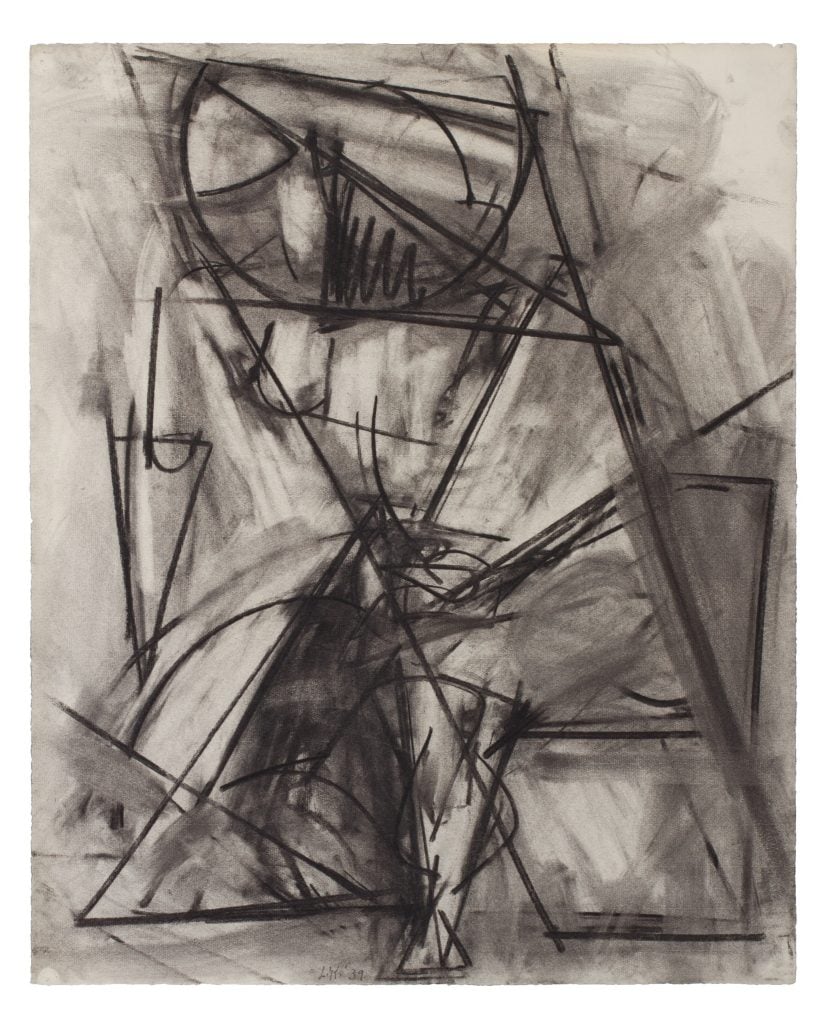Artnet News Pro
Would You Rather Buy This Hans Hofmann Painting at Art Basel or a Drawing by His Student, Lee Krasner? We Asked an Expert to Choose
Nina Del Rio, the head of Sotheby's Advisory, weighs in.

Nina Del Rio, the head of Sotheby's Advisory, weighs in.

Should a single Damien Hirst painting cost more than an entire Old Masters sale? Should Adrian Ghenie’s auction record stand higher than Frida Kahlo’s? The strange, fickle, mostly subjective nature of art valuation is one of the industry’s most enduring enigmas (and sources of complaint). To analyze what’s behind some of the confounding prices in the art market, we ask experts in our series “This or That” to compare two very different works of art offered at comparable prices.
In the late 1930s, a twentysomething Lee Krasner began taking art classes at the Manhattan school of painter Hans Hofmann, who encouraged her to pursue abstraction (and once said of her work, “This is so good, you would not know it was done by a woman”).
Hofmann’s schedule for his students included making charcoal life drawings in the morning, followed by colorful still lifes in the afternoon. Now, a variety of those charcoal drawings by Krasner, all made between 1937 and 1940, are on offer at Kasmin gallery’s booth at Art Basel, for prices ranging from $100,000 to $200,000. Meanwhile, across the fair at Richard Gray Gallery, a landscape painting by Hofmann from the same period is on sale for $300,000.
We asked Nina Del Rio, vice chairman and head of Sotheby’s Advisory, to choose which work she thinks is the better buy and why.

Lee Krasner, Untitled (1939). © 2021 Pollock-Krasner Foundation / Artists Rights Society (ARS), New York. Courtesy of Kasmin, New York.
This or That: They are both such well-regarded artists. I’m a huge Hans Hofmann fan and a huge Lee Krasner fan. A little bit of time has passed for both artists, both works were made in a similar timeframe (interestingly, a couple years before Pollock was in the picture). But I’d say the Krasner is more interesting visually—you can read how it unfolds very clearly in her painting, and I think there’s a price trajectory that makes this a better choice than the Hofmann.
On market considerations: Lee Krasner is now in the top 10 women artists to gain some air and wind in her market. If I look at her work and how much the recognition of her importance has changed in even the last five years, there’s a huge amount of momentum. I feel immediately like she’s got a long way to go both in terms of how people see her as an artist and in her market potential. The number of women artists who are recognized for the quality of their work is going to continue to evolve and grow, and she’s in the middle of this.
The prices for the drawings feel a little full right now. But if I were talking to a client, I’d say, A) that’s because they’re rare and we don’t have a lot to pin it on, and B) her market’s on the rise and the trajectory is going to continue to be steep, so it feels safe to me.
On the other hand, if we feel like there’s a whole lot of air in Lee Krasner’s market, Hofmann feels to have settled in a certain spot both art historically and from a market perspective. I think the market is fairly mature for the artist. And while Hofmann is incredibly influential in Abstract Expressionism and as a teacher, I dont think there’s as much continued discovery in the way it’s still unfolding for Krasner.
On aesthetic considerations: I look at the Hans Hofmann and I think, okay, I know works from this period; he’s working out his abstraction and developing his landscape. He’s teaching in the States at this point and his landscapes are morphing into his abstract style. This one feels like an okay example, but not a great example, and that weighs on me when I look at it.
I see a real influence of Cézanne, obviously, in Hofmann’s work. I just find it a little muddy. There’s a greater bone strucure in earlier work, and I see the bone structure in the Krasner drawings. She’s making these drawings when she’s destroying her paintings—it’s clearly a time when she’s working out her figure. It captures that moment between figuration and abstraction. They show the genesis of her work.